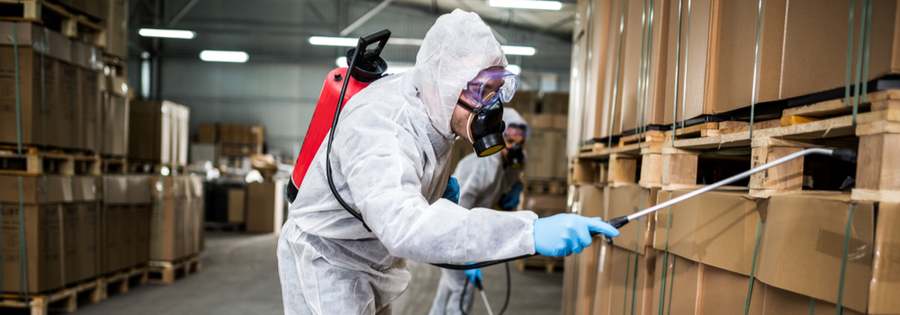Expert Bed Bug Exterminator: Rest Easy Knowing Your Home is Bug-Free!
Expert Bed Bug Exterminator: Rest Easy Knowing Your Home is Bug-Free!
Blog Article
Specialist Bug Control Techniques for Long-Term Results
Expert bug control methods envelop a thorough strategy that begins with a complete examination and analysis, adhered to by accurate pest identification to understand their behavior patterns. The implementation of Integrated Pest Management (IPM) principles, coupled with eco-conscious therapies, creates the foundation of sustainable pest removal.
Assessment and Evaluation
Upon going into a residential or commercial property for insect control services, the initial action is a comprehensive evaluation and evaluation to identify the extent of the problem and establish one of the most efficient treatment strategy. Specialist bug control professionals are educated to thoroughly analyze the premises, seeking indicators of pest task such as droppings, chomp marks, nests, or any type of structural damages. They will also analyze the problems that might be drawing in pests, such as food resources, water leaks, or access factors.

Insect Identification and Actions

Additionally, recognizing the habits of the identified bug is essential to applying efficient control measures. Understanding where pests nest, what they feed on, and their task patterns can help pest control experts devise methods to eradicate them effectively.
Integrated Pest Administration (IPM)
Integrated Pest Administration (IPM) strategies integrate numerous methods to regulate and prevent insect problems in a sustainable and eco-friendly way. pest control. By integrating techniques such as organic control, habitat manipulation, alteration of social practices, and the usage of immune varieties, IPM aims to lessen using chemical pesticides
One of the crucial concepts of IPM is the emphasis on prevention. This positive technique entails monitoring insect populaces frequently to detect any prospective problems prior to they rise. By recognizing pest problems at an early stage, anderson pest control pest control steps can be carried out promptly and properly.
Furthermore, IPM promotes the use of non-toxic insect control techniques whenever feasible. This can consist of using all-natural killers of the parasites, presenting advantageous bugs, or utilizing pheromones to disrupt mating patterns. By reducing reliance on chemical pesticides, IPM not only protects the environment but additionally aids keep an equilibrium in the environment.
Environmentally-Friendly Therapies
Carrying out eco-conscious methods in bug control procedures can efficiently address infestations while focusing on ecological sustainability. Environmentally-friendly treatments concentrate on decreasing the influence of bug control techniques on environments, non-target organisms, and human health. These approaches usually include using natural killers, such as ladybugs or nematodes, to manage pest populations, reducing the demand for chemical interventions. Additionally, strategies like environment manipulation, such as readjusting wetness levels or getting rid of food sources, can help prevent insects without making use of unsafe materials.
One more trick element of environmentally-friendly therapies is the use of natural and biodegradable items that break down rapidly without leaving harmful deposits in the environment. Organic pesticides originated from plants like chrysanthemums or neem supply effective bug control while posing very little threat to non-target species. Additionally, using techniques like warmth therapies or pheromone traps can target details pests with precision, minimizing the general ecological influence of pest control methods.
Continuous Tracking and Maintenance
Consistent security and maintenance are crucial components of effective pest control management. Ongoing tracking plays a critical duty in ensuring that pest infestations are spotted early and dealt with quickly. Regular inspections by trained specialists are required to determine any type of indications of insect activity, assess the performance of previous therapies, and make changes to the bug control strategy as required. By checking bug populations in time, pest control specialists can track fads, expect potential issues, and implement safety nets to lessen the risk of future problems.
In addition to tracking, upkeep techniques are important for long-lasting pest control success. This includes carrying out correct hygiene measures to get rid of prospective food and water resources for parasites, sealing off entry points to stop parasites from getting in the premises, read and dealing with any type of structural problems that might promote parasite infestations (bed bug dog). By incorporating ongoing monitoring and maintenance right into an incorporated parasite monitoring approach, organizations can ensure a pest-free environment and safeguard their residential property versus expensive damage and health useful content risks
Conclusion
In verdict, making use of specialist bug control methods such as extensive assessment and evaluation, accurate parasite recognition and understanding of their habits, integrated pest monitoring approaches, environmentally-friendly therapies, and ongoing surveillance and upkeep are crucial for attaining long-lasting results in pest control. By implementing these approaches, individuals can effectively take care of insect infestations and preserve a pest-free atmosphere in a lasting way.
Report this page